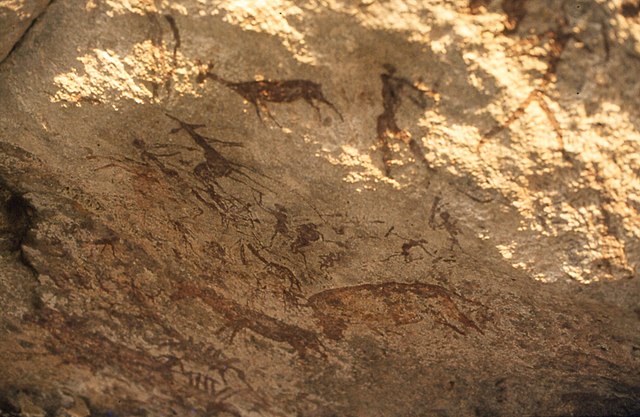
A Short History Of Writing: Part 1
Where Writing All Started
Words are everywhere. And they have been for a while. The Oxford English Dictionary estimates that there are roughly 170,000 currently in use (bearing in mind, that’s just English) with just under 50,000 words that have become obsolete.
Writing is simply the physical manifestation of a spoken language. The written word has been a way for us to communicate with each other through vast distances and is even a rudimentary form of time travel if you think about it. Words can be left now to be discovered in the future, or thanks to time zones, you can send an email into the past or the future. Pretty much anything man-made these days will have some form of language on it, whether instructions, warnings, or even a name to let you know who it was that made it.
Written words are so ingrained into our way of life that it’s easy to take them for granted. Just take a moment to think, how would the world work without text? What would we do? How would we communicate? That’s the problem our ancestors had—so just how did it all come about?
Big Things Have Small Beginnings
The ‘true’ origin of the written word stems from prehistory. To be more specific, it derives from the Paleolithic era, which was 40,000 years ago, when cave paintings were created. Even back then, man had an inherent desire to tell stories, and these crude pictures etched and painted onto cave walls would depict animals, humans, and other abstract symbols.
Of course, there’s some debate about these picture’s storytelling purpose, but whilst there’s arguments to be made for them to have served ritualistic or symbolic purposes, the point here is that these humans chose to make a lasting record of their experiences. Their function was to convey ideas, messages, and beliefs within their communities, likely in an effort of unification under a common goal.
Fast forward thousands of years and things start to get more sophisticated. And practical.
In The Sumer of 3000 BCE
‘Proper’ writing emerged in Sumer, now known as southern Iraq. Somewhere between 3500 and 3000 BCE, ‘cuneiform’ started out as a series of pictograms which were simply representations of objects and used for the simple task of inventory and trade. Pressed into clay with a reed stylus, these pictograms developed into more abstract markings, becoming more akin to letters than images.
Around the same time, in ancient Egypt, hieroglyphics popped up. Also based on pictograms, this system was more widely used beyond accounting. Here, they were used for records, religious texts and even for inscribing on monuments. The Egyptians were much more keen on expressing narratives too. Then, around 1000 BCE, the Phoenicians developed an alphabetic writing system (where a symbol represents a basic sound of the language). The Greeks and the Romans adopted and refined the Phoenician alphabet. The Greeks’ addition of vowel symbols created a more versatile writing system, which the Romans in turn adapted and spread across Europe. As a result, cuneiform and hieroglyphics fell out of favour, and written language shifted away from the ancient ways into this more modern method.
It isn’t surprising, given the alphabet’s simplicity, that it was much easier to adapt to, and by the time of the writing of the Bible, it had become the dominant form of writing, laying the foundation for the written word as we know it today. But just what impact did the development of the written word have on society?
The Writing Pen Was Mightier Than The Sword
Writing has been transformative for humans as a species. And at an incredible rate, too, when considered against the length of time it has taken for us to evolve. The written word allowed humans to form societies, write down laws and rules, and organise economies. It has also enabled us to preserve the knowledge built on with every generation to push us forward as a species.
It’s fair to say that writing has allowed us to do a lot more than the sword ever has. Without it, where would we be? Hiding from apex predators as opposed to scrolling TikTok, I suppose.
This is by no means an exhaustive history of the origins of the written word, simply the tip of the iceberg. There’s a nice video about cuneiform and a great accompanying article with a much more in-depth look at the World History Encyclopedia. There’s plenty to read there too, if your interest has been piqued.
This article is part 1 of 3, with part 2 to appear on Friday.
If you are interested in studying English or English Literature, Oxford Open Learning offers you the chance to do so at a number of levels, listed below. You can also Contact Us here.